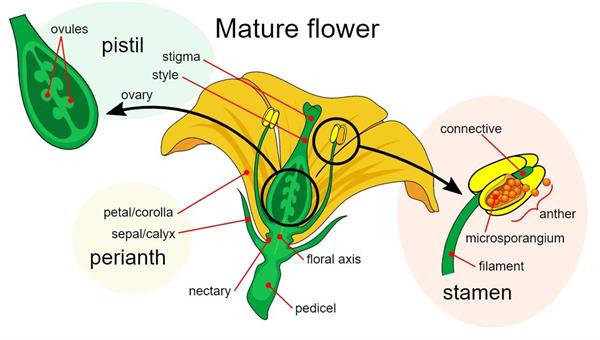
PUMPA - SMART LEARNING
எங்கள் ஆசிரியர்களுடன் 1-ஆன்-1 ஆலோசனை நேரத்தைப் பெறுங்கள். டாப்பர் ஆவதற்கு நாங்கள் பயிற்சி அளிப்போம்
Book Free DemoDefinition in plants:
The fusion ofa pollen grain and an embryo sac resulting the seed formation is known as sexual reproduction in flowering plants.

The cycle of sexual reproduction
The sexual reproduction of plants can be categorized into three different stages such as,
- Pre-fertilization events
- Fertilization
- Post-fertilization events

Before we start to learn about the process, we first discuss the reproductive organ of a plant.
Flower - the reproductive organ:
A flower is a modified shoot to carry out sexual reproduction. A typical flower consists of four whorls born on the thalamus.

Parts of a flower
In flowers, there are four different types of whorls. All these four whorls are categorised as,
- Essential whorls - Androecium & Gynoecium
- Non-essential whorls- Calyx & Corolla
Types of flowers:
1. Flowers that contain either pistil or stamens are called unisexual flowers or incomplete flowers.
Example:
Watermelon, papaya and cucumber
2. Flowers that contain both stamens and pistil are called bisexual flowers or complete flowers.
Example:
Sunflower, lily, rose, hibiscus and mustard
Important!
Both male and female unisexual flowers may be present in the same plant or in different plants.
Reference:
https://commons.wikimedia.org/wiki/Template:Other_versions/Mature_flower_diagram#/media/File:Mature_flower_diagram.svg
https://commons.wikimedia.org/wiki/File:Sexual_cycle.svg